
Horn Coral Heaven continues to live up to its name.
Photos by Bill Heimbrock
All specimens are to
scale with a U.S. dime or centimeter rule (GSA Scale)

Horn Coral Heaven continues to live up to its
name.
For March, we returned to a site that has consistently yielded more than horn coral. This state route site, located north of Cincinnati but considered part of southwestern Ohio, exposes the Whitewater Formation of the Cincinnatian Series. It is indeed more abundant in horn coral than probably any other site in the area, but also has a variety of sought-after species of mollusks, coral and echinoderms. It's a gentle slope that is about a foot deep with loose rocks and fossils that make it nearly impossible to stay up on the slope to collect fossils. You can see some of the slide marks left by people as they involuntarily descend.

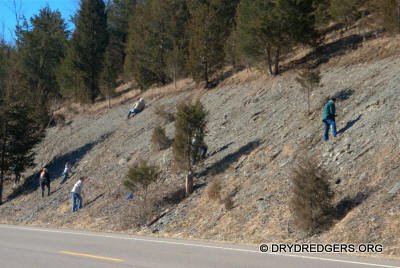


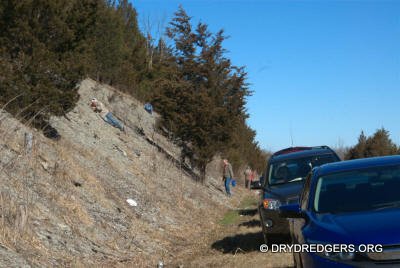

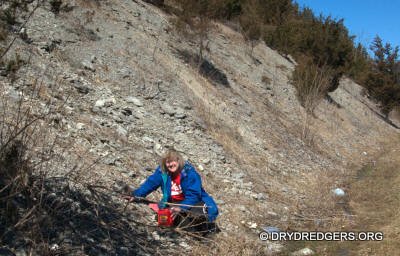
Best Finds of the Day
(All specimens are to scale with a U.S. dime or centimeter rule (GSA Scale))
The most interesting fossil find that day were a couple of specimens of internal
molds of curved-shelled nautiloid cephalopods. In the Whitewater Formation you
can hope to find these less common cephalopod species, and that is exactly where
we were looking. In the photos below, We found two specimens of either Manitoulinoceras sp.or
Beloitoceras sp..
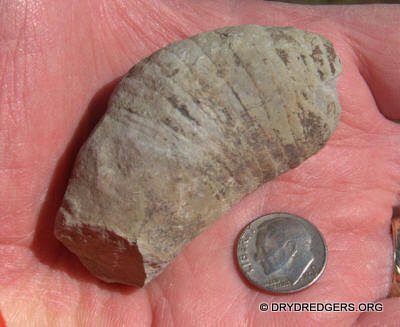
One curved shelled nautiloid specimen is above and both sides of a second
specimen is below.
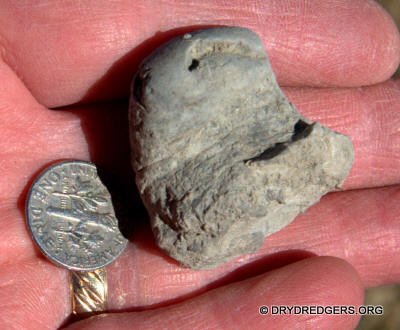

I think straight-shelled nautiloids were actually less common on this site than
the curved-shelled variety. Here's a member who pieced together fragments of
what looks somewhat like a straight-shelled nautiloid cephalopod. But I can see
scratch marks on the side that lead me to think this is a burrow infill. No
other suspected straight-shelled nautiloids were shown to me on this trip. 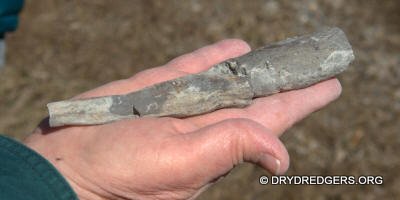
Only one whole trilobite was found
that day. It's a Flexicalymene sp.

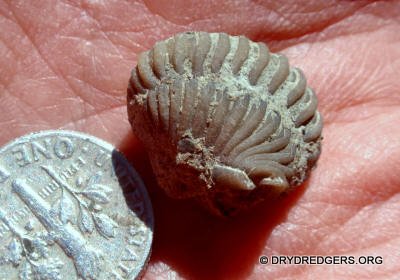
Kids particularly enjoyed finding lots of large solitary
corals. These next photos show the most common species Grewingkia
canadensis.(next 7 pics).

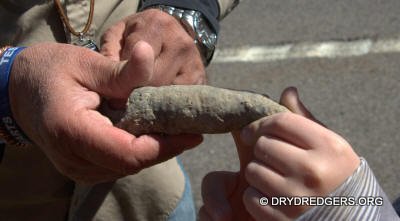



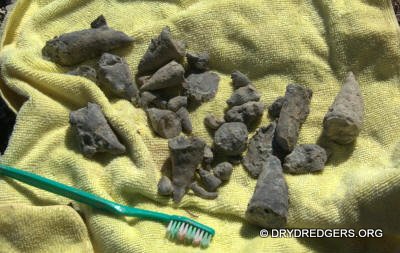
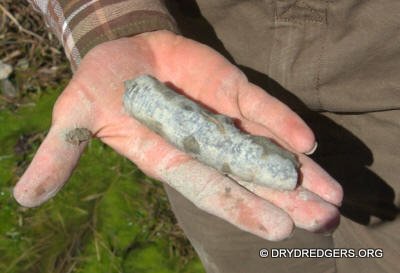
The other common type of horn coral we found was smaller and tapers to a point faster than Grewingkia. It's Streptelasma divaricans. This first picture is of an interesting pair of Streptelasma that were encrusted by bryozoans. The Ordovician sea floor was prime real estate for attaching horn corals as well as encrusting bryozoans.
Colonial corals were also found. The most common was one that encrusts brachiopods and other shells. Shown in the next 5 pics is Protaraea richmondensis.
The 2 photos below show 2 sides to one specimen. Protaraea
richmondensis encrusting a
Hebertella sp. brachiopod.
 o
o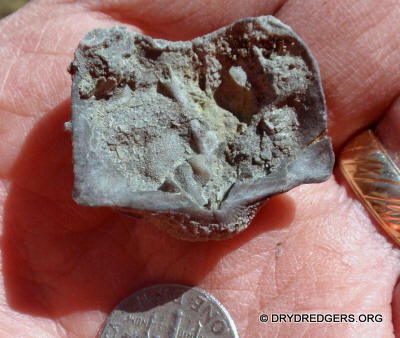
This next specimen is most often classified as a colonial coral, but my actually
be a different type of animal. It's currently called Tetradium sp.
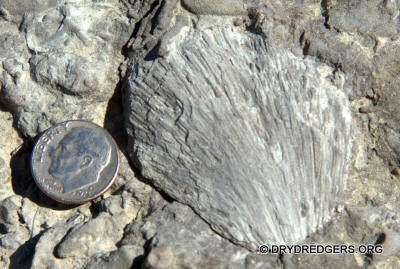
Brachiopods
Horn coral heaven has a wide variety of species for Vinlandostrophia. Yet only a few are documented as found in the Whitewater Formation.
These first two are probably Vinlandostrophia
acutilirata.
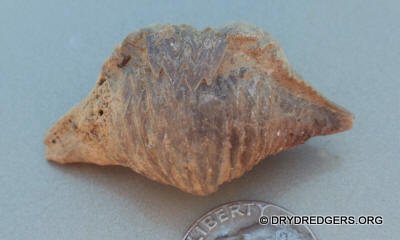
These next two are most certainly Vinlandostrophia, but the species is uncertain.
This next specimen is probably Vinlandostrophia moritura.
The next 2 pics show the two valves of the specimen.
It's a bit encrusted, so I'm not certain.

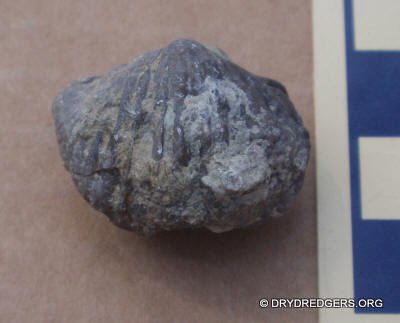
Here's another Vinlandostrophia in two views of the specimen. Maybe it's V. moritura. Maybe it's Maybeline.:-)
This site was great for finding
mollusks, including bivalves. Here's a nice specimen of the clam
Caritodens sp. You can see shell features. That's not unusual for
Caritodens, but would be unusual for other types of
clams.
Here's a nice internal mold of a clam. It's possibly Ambonychia sp.
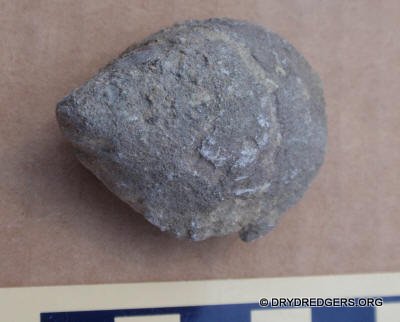

Gastropods and Monoplacophorans
This first specimen appears to be the monoplacophoran Cyrtolites sp.
Here's a Cyclonema sp. covered in dirt. All specimens pictured on this field
trip report are the way they look right off the ground on this site.
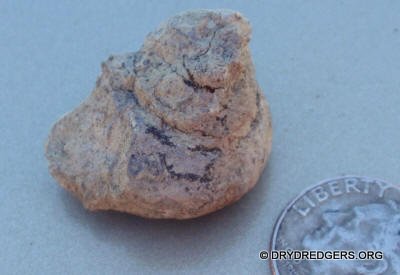
This is a very interesting snail internal mold that was preserved by being
encrusted by a bryozoan. I think part of the snail shell is represented, thanks
to the bryozoan!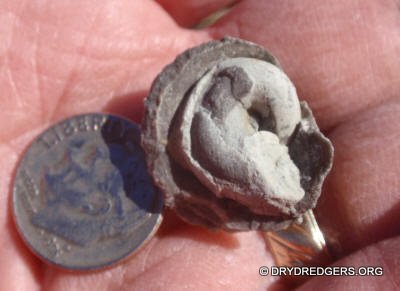
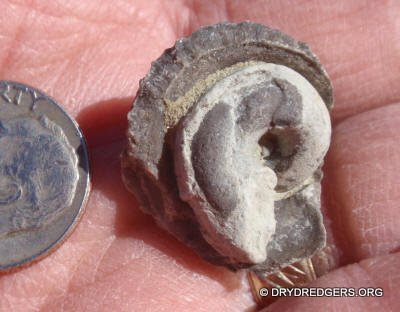
Here's one member's pickings of monoplacophorans and snails from that day.

There were a number of trepostome bryozoans found on the site. (next 2 pics)
Here's a weird one. This rock has a layer of shale that has preserved the
surface of something. It looks a bit like the impressions of the bryozoan
Graptodictya perelegans.
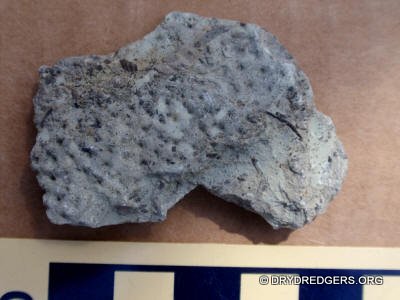
And finally, there was a fair amount of glacial till weathering out of this road
cut. Here are some fossils in that glacial material that came down from north of
here. Not Cincinnatian material.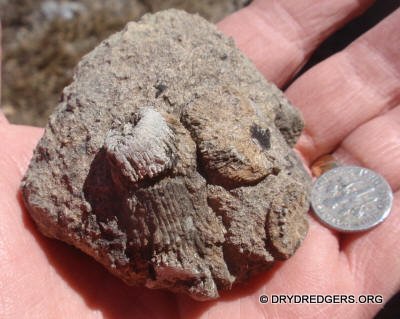


Hope you liked this field trip. Join us the next time we go to Horn Coral Heaven. It's more than just horn coral, I promise.
You can see pictures of our previous recent field trips to Horn Coral Heaven.
Now let's see our April 2019 field trip to
Southeastern Indiana.
Back to the Field Trip Index Page
Return to Dry Dredgers Home Page
The Dry Dredgers and individual contributors reserve the rights
to all information, images, and content presented here. Permission to reproduce
in any fashion, must be requested in writing to
admin@drydredgers.org.
www.drydredgers.org
is designed and maintained by Bill Heimbrock.